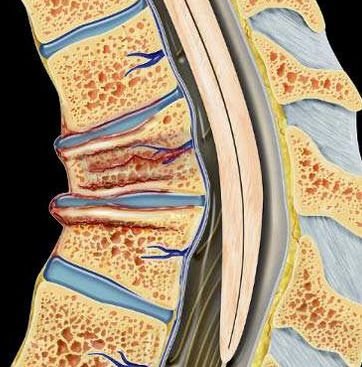Lateral mass and facet fractures of the cervical spine
Lateral mass and facet fractures of the cervical spine
Lateral mass and facet fractures of the cervical spine are among the most complex injuries involving the posterior elements of the cervical vertebrae. These fractures often result from high-energy trauma such as road traffic accidents, falls, sports injuries, or industrial mishaps. In Bangladesh, such injuries are becoming increasingly common due to a rise in motorbike accidents, lack of protective gear, and workplace hazards. These injuries require precise diagnosis, careful classification, and expert surgical management, especially when there is associated spinal cord compression or instability. Dr. Md. Nafaur Rahman, a leading pediatric and spine neurosurgeon in Bangladesh, provides advanced care for these challenging cervical injuries with excellent outcomes. Understanding Lateral Mass and Facet Fractures The lateral mass is the thick, weight-bearing portion of the cervical vertebra that connects the superior and inferior articular processes (facet joints). Facet joints themselves are small articulations between vertebrae that guide and restrict spinal movement. Fractures to these structures can lead to: Cervical instability Malalignment or dislocation Spinal cord or nerve root compression Neurological symptoms such as weakness or numbness Chronic pain and deformity if untreated Causes in the Bangladesh Context Motorbike and rickshaw accidents without helmets Falls from rooftops, trees, or ladders in rural areas Heavy object trauma or crush injuries in industrial zones Playground injuries or falls in children Sports injuries involving tackles or falls on the head or neck Domestic violence or non-accidental trauma in children Classification of Injuries Isolated Lateral Mass Fractures – Often stable, but may progress if missed Facet Fractures (Unilateral/Bilateral) – May involve facet dislocation Jumped or Locked Facets – Severe form with high instability Comminuted Lateral Mass Fractures – High-velocity trauma, often with neural damage Fracture-dislocations – Require urgent surgical intervention Symptoms of Cervical Facet or Lateral Mass Fractures Intense neck pain and muscle spasm Restricted neck motion Radicular pain (shooting pain in arms or shoulders) Numbness, tingling, or weakness in upper limbs In severe cases: paralysis, respiratory distress, or spinal shock In children: persistent crying, neck tilt, reluctance to move Diagnostic Approach Dr. Md. Nafaur Rahman follows an evidence-based protocol: X-ray (Lateral and Oblique Cervical Spine Views) CT Scan with 3D reconstruction – to identify fracture pattern and instability MRI Cervical Spine – to evaluate disc, cord compression, and soft tissue damage Neurological evaluation (ASIA score) – for spinal cord assessment In Bangladesh, access to CT/MRI may be delayed in district areas, hence timely referral to specialized centers like NINS or BPNC is crucial. Management in Bangladesh: Conservative vs Surgical ✅ Non-Surgical Management (Stable Injuries) Used in non-displaced, isolated fractures Cervical collar or Halo vest immobilization for 6–12 weeks Activity restriction and regular imaging follow-up Physiotherapy post-healing Close monitoring to avoid delayed displacement ✅ Surgical Management (Unstable or Neurologically Compromising Fractures) Surgery is required in: Displaced fractures or dislocations Unilateral/Bilateral facet fractures with instability Neurological deficits or cord compression Failure of conservative treatment Surgical Techniques Offered by Dr. Nafaur Rahman: Posterior cervical fusion with lateral mass screws and rods Facet joint reduction and stabilization Anterior decompression (ACDF) + posterior instrumentation in combined injuries Minimally invasive spine surgery when possible Use of intraoperative neuromonitoring for safety in complex cases In pediatric cases, growth-preserving techniques are used to avoid future spinal deformity. Postoperative Recovery ICU care in complex or neurologically compromised patients Postoperative bracing for 6–8 weeks Early mobilization under supervision Neurological rehabilitation if required Long-term follow-up for fusion monitoring and spinal growth (in children) Prognosis Stable fractures have excellent outcomes with proper immobilization Surgically treated cases usually recover well with early intervention Prognosis depends on timing, extent of injury, and cord involvement Neglected or misdiagnosed cases may lead to permanent deformity or disability Why Choose Dr. Md. Nafaur Rahman? ✅ Bangladesh’s leading expert in cervical spine trauma surgery ✅ Treats both adult and pediatric spine fractures with global techniques ✅ Advanced facilities at NINS and Bangladesh Paediatric Neurocare Centre ✅ Offers cost-effective spine surgeries with international standard care ✅ Highly skilled in instrumentation, fusion, and nerve decompression ✅ Known for accurate diagnosis, surgical precision, and compassionate care Contact for Expert Cervical Spine Injury Care 📌 Dr. Md. Nafaur Rahman Assistant Professor, Pediatric Neurosurgery, National Institute of Neurosciences & Hospital (NINS) Chief Consultant, Bangladesh Paediatric Neurocare Centre 📞 For Appointment/Serial: 📱 +8801912988182 | +8801607033535 🌐 Visit: www.neurosurgeonnafaur.com










